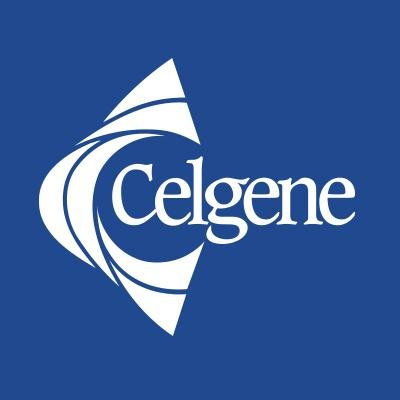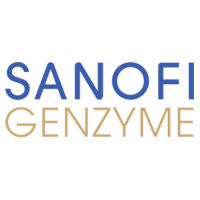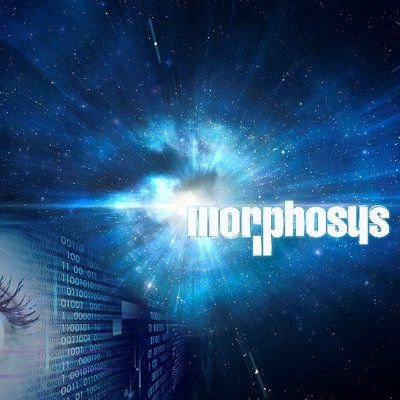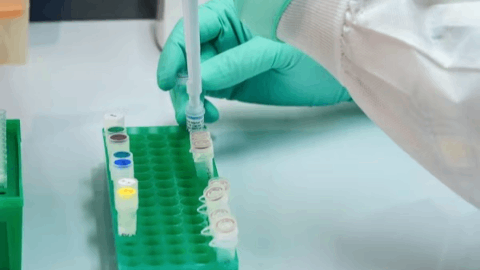Oral presentation from pooled analyses of the IMerge population suggests that treatment-emergent cytopenias may reflect on-target effects associated with meaningful clinical outcomes, including hemoglobin increases and transfusion independence in lower-risk MDS Long-term follow-up analysis from IMerge supports favorable survival trends and durable clinical benefit in LR-MDS Additional analyses in myelofibrosis and advanced MDS/AML offer important context for understanding the biology of telomerase inhibition FOSTER CITY, Calif., Dec. 08, 2025 (GLOBE NEWSWIRE) -- Geron Corporation (Nasdaq: GERN), a commercial-stage biopharmaceutical company aiming to change lives by changing the course of blood cancer, today announced new data presented at the 67th American Society of Hematology (ASH) 2025 Annual Meeting being held in Orlando, FL. Collectively, the oral and poster presentations reinforce the growing body of evidence supporting the potential of RYTELO® (imetelstat), Geron’s first-in-class telomerase inhibitor, across lower-risk myelodysplastic syndromes/neoplasms (LR-MDS) and myelofibrosis (MF). “These new data confirm our understanding of how imetelstat works and highlight the potential long-term benefit in appropriate patients,” said Joseph E. Eid, M.D., Executive Vice President, Research and Development and Chief Medical Officer of Geron. “The data suggesting the association between early treatment-emergent cytopenias and subsequent hemoglobin and transfusion independence response with imetelstat, together with the long-term outcomes from IMerge presented at ASH, continue to reinforce imetelstat as a differentiated treatment option for eligible patients with lower-risk MDS.” The oral presentation by Amer Zeidan, MBBS, MHS, Yale School of Medicine, and a principal investigator of the IMerge trial, featured pooled analyses of the IMerge population suggesting that early treatment-emergent neutropenia and thrombocytopenia may be associated with greater hemoglobin increases, which emerged as a main driver for achieving red blood cell transfusion independence (RBC-TI). “What stands out in these analyses is the consistency between the clinical response we see in patients and the early treatment patterns observed in their blood counts when we use imetelstat in non-del5q lower-risk MDS patients with transfusion dependent anemia. This is reminiscent of similar trends we see with lenalidomide, which is a disease-modifying agent in del5q lower-risk MDS patients,” said Amer Zeidan, Chief of the Division of Hematologic Malignancies and Professor of Medicine at Yale Cancer Center. “For patients with lower-risk MDS, transfusion dependence places a considerable physical and logistical burden on daily life, and treatment options beyond ESAs remain limited. The association we observed between early blood count changes and later improvements in hemoglobin provides valuable insight for clinicians and underscores the meaningful benefit imetelstat may offer to this population.” Additional poster presentations provided long-term outcomes data, including survival data in LR-MDS, exploratory biomarker analyses in MF, and ongoing combination and investigator-sponsored studies across the myeloid malignancy spectrum. Highlights from the ASH 2025 Presentations Correlation between Treatment-Emergent Cytopenias and Clinical Response with Imetelstat in Patients with Lower-Risk Myelodysplastic Syndromes: Analysis from the IMerge Trial (Zeidan et al., Oral #490) This oral presentation reported findings from post-hoc analyses examining the potential relationship between treatment-emergent cytopenias within the first two cycles of imetelstat treatment and key clinical outcomes in the pooled IMerge patient population. These analyses evaluated reductions in platelets and neutrophils alongside hemoglobin (Hb) rise, achievement of ≥8- or ≥24-week RBC-TI, and achievement of Hb rise ≥1.5 g/dL lasting ≥8 weeks. Across analyses looking at single clinical factors, patients who experienced ≥75% reductions in neutrophils or ≥50% reductions in platelets during the first two cycles of imetelstat had greater maximum Hb increases compared with those who did not experience such reductions. Numerically higher rates of ≥8- or ≥24-week RBC-TI were also observed in these groups. When the analyses accounted for multiple clinical factors at the same time, the associations between early cytopenias and Hb improvements remained consistent: ≥75% neutrophil reduction was associated with greater Hb increase, whereas maximum ≥50% platelet reduction was associated with achieving Hb rise ≥1.5 g/dL lasting ≥8 weeks. Further, Hb rise emerged as a main driver of achieving transfusion independence. A strong association between platelet and neutrophil reductions was also observed. These findings offer deeper context for interpreting patient responses and provide insight into how imetelstat’s biological effects may translate into meaningful clinical outcomes. Long-Term Outcomes and Overall Survival from the Randomized, Double-Blind, Placebo-Controlled, Phase 3 IMerge Trial of Imetelstat for Lower-Risk Myelodysplastic Syndromes (Santini et al., Poster #2074) This poster reported updated long-term outcomes data from the double-blind, placebo-controlled IMerge Phase 3 trial assessing overall survival (OS), progression-free survival (PFS), and time to progression to acute myeloid leukemia (AML) in patients with transfusion-dependent LR-MDS treated with imetelstat. At a median follow-up of 45 months, the analysis showed a favorable trend toward improved secondary endpoints of OS, PFS, and time to AML progression for imetelstat-treated patients compared with placebo recipients in the overall population. OS favored imetelstat versus placebo in most predefined subgroups, regardless of transfusion burden, serum EPO (erythropoietin) level, and ring sideroblast positive or negative status. Additionally, OS outcomes were numerically improved in patients who achieved RBC-TI or hemoglobin improvement. These results suggest that imetelstat may provide meaningful long-term benefit for patients with lower-risk MDS who are transfusion independent, although the trial was not powered to detect statistical significance for OS. The data support continued clinical exploration of telomerase inhibition as a potential disease-modifying approach for LR-MDS. Correlation between IL-8 and TNF-Alpha Levels and Overall Survival in Patients with Myelofibrosis Relapsed or Refractory to a JAKi Treated with Imetelstat in the IMbark Trial (Mascarenhas et al., Poster #5585) This poster reported results from a post hoc analysis of inflammatory cytokines in the Phase 2 IMbark trial of patients with JAK inhibitor relapsed/refractory myelofibrosis treated with imetelstat. The analysis evaluated how cytokine changes corresponded with clinical endpoints, including symptom improvement, spleen volume reduction, and survival trends. The findings showed that patients treated with imetelstat experienced dose-dependent reductions in IL-8 and TNF-a (proinflammatory cytokines), with the 8.9 mg/kg dose showing more pronounced effects compared to the 4.4 mg/kg dose. Reductions in these cytokines corresponded with reductions in total symptom score or spleen volume, consistent with previously reported clinical activity. A longer survival trend was observed in patients receiving the higher dose, particularly among patients with elevated baseline IL-8 and TNF-a levels, although subgroup sizes were small. These results suggest that cytokine modulation may contribute to the clinical activity of imetelstat and provide further support for its potential disease-modifying properties in myelofibrosis. These findings build on prior biomarker work demonstrating imetelstat’s impact on malignant progenitor cells in myelofibrosis. IMproveMF: Phase 1b Trial of Imetelstat Plus Ruxolitinib in Patients with Intermediate-1/2 or High-Risk Myelofibrosis (Mascarenhas, et al., Poster #2052) This poster reported enrollment progress and emerging observations from the Phase 1b IMproveMF trial evaluating imetelstat in combination with ruxolitinib for patients with intermediate-2 or high-risk myelofibrosis. The study is designed to determine safety, tolerability, and recommended dosing for future development. As of the July 2025 cutoff, the trial had enrolled three patients in part 2 of the study, with the first patient treated in January 2025. The part 1 dose escalation phase of the study is complete, with 8.9 mg/kg imetelstat IV every 4 weeks identified as the recommended dose to be combined with ruxolitinib. Advanced Myelodysplastic Neoplasms or AML Failing HMA-based Therapy – Preliminary Results of the IMpress Study (Ades, et al, Poster #5115) This poster reported interim results from an investigator-sponsored Phase 2 study evaluating imetelstat in patients with advanced myelodysplastic neoplasms or acute myeloid leukemia who were refractory to, relapsed after, or intolerant to hypomethylating agent, or HMA, therapy. The results showed that imetelstat administered at 7.1 mg/kg IV every 2 weeks in this patient population did not appear to be associated with additional toxicity, and that treatment-emergent adverse events were manageable in this heavily pre-treated population. While limited single-agent clinical activity was observed – consistent with the aggressive disease biology and prior treatment history – several patients were able to complete protocol-specified visits, and one remained on treatment at the time of the analysis. These findings suggest that single agent imetelstat has a predictable and manageable safety profile at this exposure in these advanced diseases and provides important insights for potential combination strategies in high-risk populations, where unmet needs remain substantial. The ASH presentations are available on Geron’s website in the Investor section under publications. Dr. Zeidan has served as a consultant for Geron and has received honoraria. The views expressed in this press release and in the presentation are his own and do not necessarily reflect those of his employer. About RYTELO (imetelstat)RYTELO is an oligonucleotide telomerase inhibitor approved in the U.S. for the treatment of adult patients with LR-MDS with transfusion-dependent anemia requiring four or more red blood cell units over eight weeks who have not responded to or have lost response to or are ineligible for erythropoiesis-stimulating agents (ESAs). It is indicated to be administered as an intravenous infusion over two hours every four weeks.In addition, RYTELO is approved in the European Union as a monotherapy for the treatment of adult patients with transfusion-dependent anemia due to very low, low or intermediate risk myelodysplastic syndromes without an isolated deletion 5q cytogenetic (non-del 5q) abnormality and who had an unsatisfactory response to or are ineligible for erythropoietin-based therapy. RYTELO is a first-in-class treatment that works by inhibiting telomerase enzymatic activity. Telomeres are protective caps at the end of chromosomes that naturally shorten each time a cell divides. In LR-MDS, abnormal bone marrow cells often express the enzyme telomerase, which rebuilds those telomeres, allowing for uncontrolled cell division. Developed and exclusively owned by Geron, RYTELO is the first and only telomerase inhibitor approved by the U.S. Food and Drug Administration and the European Commission. US IMPORTANT SAFETY INFORMATION ABOUT RYTELO® WARNINGS AND PRECAUTIONS Thrombocytopenia RYTELO can cause thrombocytopenia based on laboratory values. In the clinical trial, new or worsening Grade 3 or 4 decreased platelets occurred in 65% of patients with MDS treated with RYTELO.Monitor patients with thrombocytopenia for bleeding. Monitor complete blood cell counts prior to initiation of RYTELO, weekly for the first two cycles, prior to each cycle thereafter, and as clinically indicated. Administer platelet transfusions as appropriate. Delay the next cycle and resume at the same or reduced dose, or discontinue as recommended. Neutropenia RYTELO can cause neutropenia based on laboratory values. In the clinical trial, new or worsening Grade 3 or 4 decreased neutrophils occurred in 72% of patients with MDS treated with RYTELO.Monitor patients with Grade 3 or 4 neutropenia for infections, including sepsis. Monitor complete blood cell counts prior to initiation of RYTELO, weekly for the first two cycles, prior to each cycle thereafter, and as clinically indicated. Administer growth factors and anti-infective therapies for treatment or prophylaxis as appropriate. Delay the next cycle and resume at the same or reduced dose, or discontinue as recommended. Infusion-Related Reactions RYTELO can cause infusion-related reactions. In the clinical trial, infusion-related reactions occurred in 8% of patients with MDS treated with RYTELO; Grade 3 or 4 infusion-related reactions occurred in 1.7%, including hypertensive crisis (0.8%). The most common infusion-related reaction was headache (4.2%). Infusion-related reactions usually occur during or shortly after the end of the infusion.Premedicate patients at least 30 minutes prior to infusion with diphenhydramine and hydrocortisone as recommended and monitor patients for at least one hour following the infusion as recommended. Manage symptoms of infusion-related reactions with supportive care and infusion interruptions, decrease infusion rate, or permanently discontinue as recommended. Embryo-Fetal Toxicity Based on animal findings, RYTELO can cause embryo-fetal harm when administered to a pregnant woman. Advise pregnant women of the potential risk to a fetus. Advise females of reproductive potential to use effective contraception during treatment with RYTELO and for 1 week after the last dose. ADVERSE REACTIONS Serious adverse reactions occurred in 32% of patients who received RYTELO. Serious adverse reactions in >2% of patients included sepsis (4.2%) and fracture (3.4%), cardiac failure (2.5%), and hemorrhage (2.5%). Fatal adverse reactions occurred in 0.8% of patients who received RYTELO, including sepsis (0.8%).Most common adverse reactions (≥10% with a difference between arms of >5% compared to placebo), including laboratory abnormalities, were decreased platelets, decreased white blood cells, decreased neutrophils, increased AST, increased alkaline phosphatase, increased ALT, fatigue, prolonged partial thromboplastin time, arthralgia/myalgia, COVID-19 infections, and headache. Please see RYTELO (imetelstat) full Prescribing Information, including Medication Guide, available at https://pi.geron.com/products/US/pi/rytelo_pi.pdf. About GeronGeron is a commercial-stage biopharmaceutical company aiming to change lives by changing the course of blood cancer. Our first-in-class telomerase inhibitor RYTELO® (imetelstat) is approved in the United States and the European Union for the treatment of certain adult patients with lower-risk myelodysplastic syndromes with transfusion dependent anemia. We are also conducting a pivotal Phase 3 clinical trial of imetelstat in JAK-inhibitor relapsed/refractory myelofibrosis, as well as studies in other myeloid hematologic malignancies. Inhibiting telomerase activity, which is increased in malignant stem and progenitor cells in the bone marrow, aims to reduce proliferation and induce death of malignant cells. To learn more, visit www.geron.com or follow us on LinkedIn. Use of Forward-Looking Statements Except for the historical information contained herein, this press release contains forward-looking statements made pursuant to the “safe harbor” provisions of the Private Securities Litigation Reform Act of 1995. Investors are cautioned that such statements, include, without limitation, those regarding: (i) clinical data from the IMerge pooled population suggesting that early treatment-emergent cytopenias with imetelstat may reflect on-target effects associated with meaningful clinical outcomes, including hemoglobin increases and transfusion independence, in LR-MDS; (ii) that long-term follow-up analysis from IMerge supports favorable survival trends and durable clinical benefit in LR-MDS; (iii) the Company’s understanding of how imetelstat works and the potential long-term benefit in appropriate patients; (iv) the Company’s belief that data continue to reinforce imetelstat as a differentiated treatment for eligible patients with LR-MDS; (v) the potential for imetelstat to have disease-modifying activity; (vi) the Company’s beliefs that the depth and breadth of its data reinforce the potential of imetelstat to address critical unmet needs in lower-risk MDS; (vii) the interpretations and expectations of the data on imetelstat presented at the ASH 2025 Annual Meeting; and (viii) other statements that are not historical facts, constitute forward-looking statements. These forward-looking statements involve risks and uncertainties that can cause actual results to differ materially from those in such forward-looking statements. These risks and uncertainties, include, without limitation, risks and uncertainties related to: (a) whether Geron is successful in commercializing RYTELO (imetelstat) for the treatment of certain patients with lower-risk MDS with transfusion dependent anemia and achieves market acceptance across the breadth of the eligible patient segments in RYTELO’s approved indication; (b) whether the FDA and European Commission will approve imetelstat for other indications on the timelines expected, or at all; (c) Geron’s plans to commercialize RYTELO in the European Union, or EU, and risks related to operating outside of the U.S.; (d) whether Geron overcomes potential delays and other adverse impacts that may be caused by enrollment, clinical, safety, efficacy, technical, scientific, intellectual property, manufacturing and regulatory challenges in order to have the financial resources for and meet expected timelines and planned milestones; (e) whether regulatory authorities permit the further development of imetelstat on a timely basis, or at all, without any clinical holds; (f) whether any future safety or efficacy results of RYTELO treatment cause its benefit-risk profile to become unacceptable; (g) whether imetelstat actually demonstrates disease-modifying activity in patients and the ability to target the malignant stem and progenitor cells of the underlying disease; (h) whether Geron meets its post-marketing requirements and commitments for RYTELO; (i) whether there are failures or delays in manufacturing or supplying sufficient quantities of RYTELO (imetelstat) or other clinical trial materials that impact commercialization of RYTELO or the continuation of clinical trials; (j) that the projected timing for the interim and final analyses of the Phase 3 IMpactMF trial in R/R MF may vary depending on actual death rates in the trial; and (k) whether Geron stays in compliance with and satisfies its obligations under its debt and synthetic royalty financing agreements. Additional information on the above risks and uncertainties and additional risks, uncertainties and factors that could cause actual results to differ materially from those in the forward-looking statements are contained in Geron’s filings and periodic reports filed with the Securities and Exchange Commission under the heading “Risk Factors” and elsewhere in such filings and reports, including Geron’s quarterly report on Form 10-Q for the quarter ended September 30, 2025, and subsequent filings and reports by Geron. Undue reliance should not be placed on forward-looking statements, which speak only as of the date they are made, and the facts and assumptions underlying the forward-looking statements may change. Except as required by law, Geron disclaims any obligation to update these forward-looking statements to reflect future information, events, or circumstances. Investor and Media:Dawn SchottlandtSenior Vice President, Investor Relations and Corporate Affairsdschottlandt@geron.com















